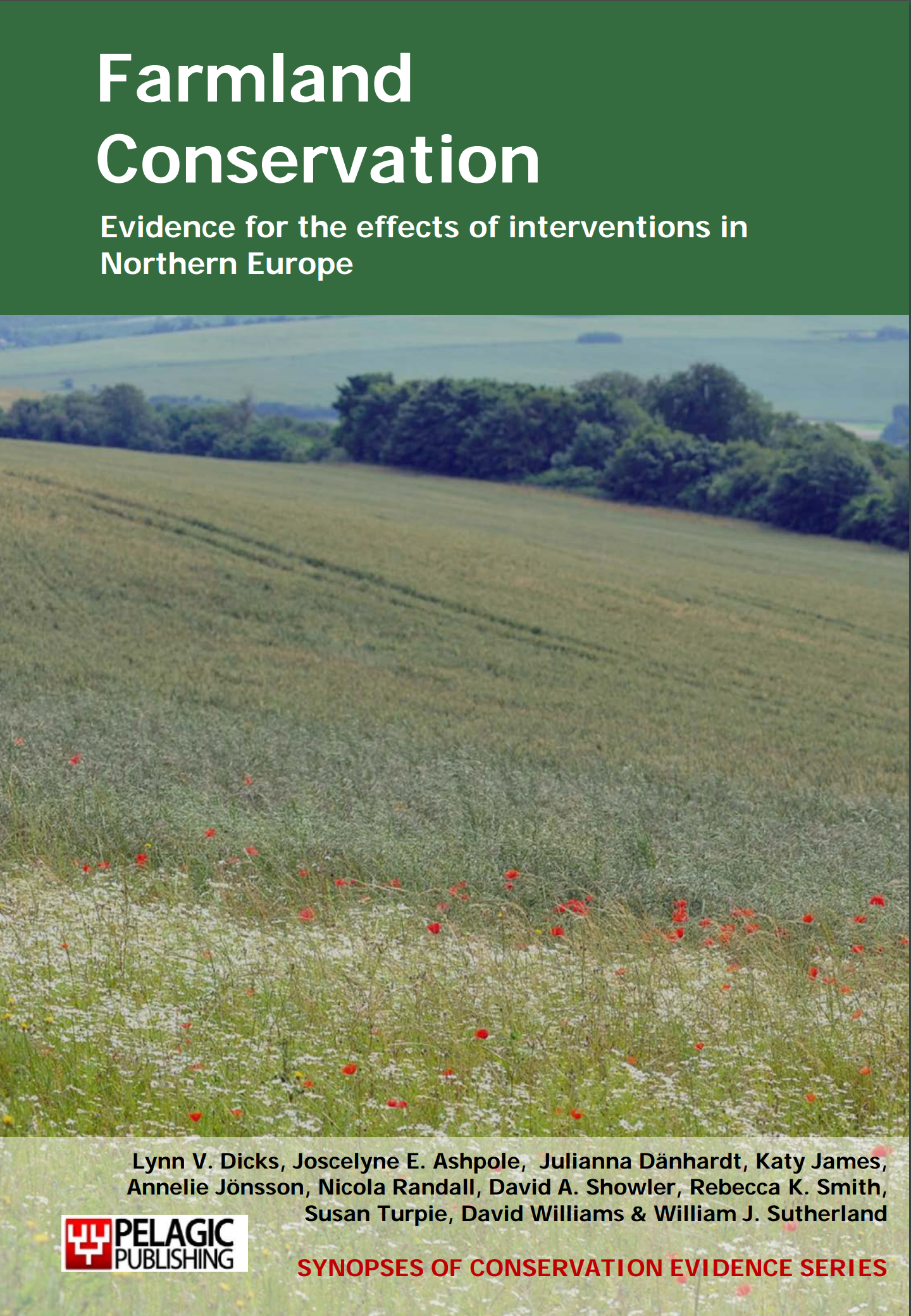Plant more than one crop per field (intercropping)
-
Overall effectiveness category Evidence not assessed
-
Number of studies: 5
View assessment score
Hide assessment score
How is the evidence assessed?
-
Effectiveness
not assessed -
Certainty
not assessed -
Harms
not assessed
Study locations
Supporting evidence from individual studies
A replicated, controlled, randomized study of a cabbage crop in 1976 in the UK (Tukahirwa & Coaker 1982) found that ground beetle (Carabidae) species were almost twice as abundant in cabbage Brassica oleracea intercropped with French beans Phaseolus vulgaris than in a cabbage monoculture. However, only Bembidion lampros (210 vs 90 individuals), B. quadrimaculatum (400 vs 260), Pterostichus madidus (45 vs 15) and Harpalus spp. were significantly more abundant in intercropped plots. Rove beetles (Staphylinidae) did not tend to differ between treatments. Plots of 10 x 10 m were established in two randomized blocks, each with four treatments: brussels sprouts, brussels sprouts inter-planted with two rows of French beans between each row, brussels sprouts inter-planted with two rows of beans between and across rows and beans alone. Beans were sown in May and brussels sprouts in mid-June 1976. The abundance of adult ground beetles and rove beetles were sampled using two pitfall traps/plot. Aphid (Aphidoidea) and root fly Delia brassicae abundance was also sampled.
Study and other actions testedA replicated, controlled, randomized study from 1985 to 1990 of a cabbage crop in Poland (Wiech & Wnuk 1991) found that intercropping with white clover Trifolium repens resulted in a higher abundance of ground beetles (Carabidae). The total number of ground beetles was greater in intercropped cabbage Brassica oleracea and clover plots (2,528) than those with cabbage alone (1,753). This was the case for Amara aulica (16 individuals vs 52), Calathus fuscipes (105 vs 199), Harpalus rufipes (586 vs 920), Pterostichus cupreus (110 vs 305), P. vulgaris (13 vs 53) and ‘other species’ (360 vs 547), but not Bembidion properans (452 vs 563). There was no association between increased cover and predator diversity. White clover was sown in 30 m² plots in May on a four replicated block design. Cabbage was sown between the rows within plots in June. Ground beetles were sampled with two pitfall traps in the centre of each plot. Samples were collected weekly through the growing period. Aphid (Aphidoidea) abundance and damage by the cabbage moth Mamestra brassicae was also sampled.
Study and other actions testedA trial at an experimental farm on the Swiss Plateau, Switzerland, in 1989 (Wyss & Glasstetter 1992) found that earthworm (class: Oligochaeta) abundance but not biomass was higher in a maize Zea mays plot immediately followed by a rye grass Lolium 282 perenne crop (called a ‘catch crop’) to provide winter cover. Control and catch crop plots had averages of 127 and 111 earthworms/m2, and 45 and 64 g earthworm biomass/m2, respectively. The proportion of deep-burrowing earthworms was similar with 14 and 13% of individuals in the control and catch crop plots respectively. A test strip of maize 14 m long was sown with a rye grass catch crop in autumn, and compared with a control strip of conventional maize. Earthworms were sampled by hand-sorting 0.1 m3 of soil from each test strip, to a depth of 40 cm, on six dates between April and October 1989. There was no replication.
Study and other actions testedplication. A replicated, controlled, randomized study in 1991 and 1992 of a cabbage crop near Lienden in the Netherlands (Booij et al. 1997) found that ground beetle (Carabidae) abundance was higher in cabbage Brassica oleracea intercropped with clover Trifolium spp. than a cabbage monoculture. The overall activity-density of ground beetles was significantly higher in intercropped plots (151–455 caught) than within cabbage alone (85–263). There was no difference in intercropping with white clover Trifolium repens (21–22 species/plot) or subterranean clover Trifolium subterraneum (20–23 species/plot). A number of species were caught significantly more frequently in intercropped plots including the most dominant species Pterostichus melanarius (81–153 individuals vs 71) and Agonum dorsale (77–152 vs 63), and also Loricera pilicornis (6.3–9.3 vs 0.3). In both years, species diversity was higher in intercropped plots (20–23 species/plot) than cabbage alone (17–18), but this was only significant in 1991 (20–22 vs 18). Differences in activity-density between treatments tended to be lost by late summer. A randomized block experiment with four replicates of three treatments in plots of 25 x 25 m² was established in 1990. Clover was sown before cabbage and covered approximately half of the soil surface. No pesticides were applied. Six pitfall traps were set, 7 m apart, in each plot and were emptied weekly between May and September.
Study and other actions testedA 1999 review of literature (Kromp 1999) reported six studies showing that intercropping enhanced ground beetle (Carabidae) numbers: (Tukahirwa & Coaker 1982, Wiech & Wnuk1991), Armstrong & McKinlay (1994), Carcamo & Spence (1994), Helenius & Tolonen (1994), (Booij et al. 1997), relative to single crops.
Study and other actions tested
Where has this evidence come from?
List of journals searched by synopsis
All the journals searched for all synopses
This Action forms part of the Action Synopsis:
Farmland Conservation
Farmland Conservation - Published 2013
Farmland Synopsis





)_2023.JPG)














